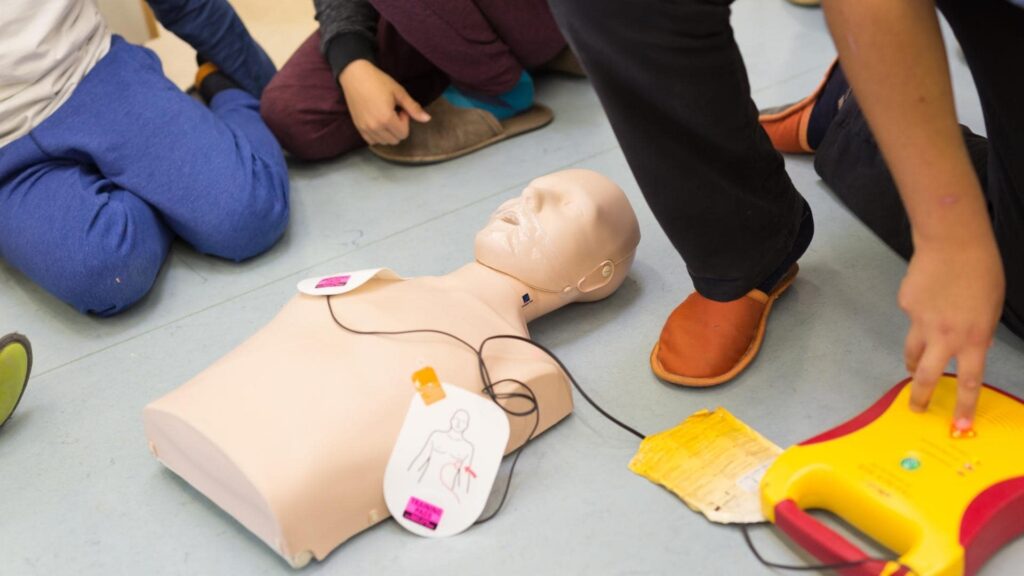First Aid training prepares you to help others in several situations, including accidents and medical emergencies. In addition, the theoretical knowledge and practical skills learned during a First Aid course can impact someone’s survival rate.
Before your first aid training, you might have questions such as, what to wear for first aid training? How do I prepare? We dedicate this blog to help clarify your doubts about the course to give you a head start if you’re registered for or considering taking first aid training with Coast2Coast First Aid & Aquatics.
What are the Different Types of First Aid Training?
Several types of First Aid training differ according to the level of training required by you or your workplace. For example, depending on your workplace needs or personal interests, you could choose between Emergency or Standard First Aid training.
It takes 8 hours to complete an Emergency First Aid course, whereas you require 16 hours to complete the Standard First Aid course, and both courses include CPR/AED training. Still, Standard First Aid also provides additional training on how to treat head, muscle, bone, and spinal injuries, environmental emergencies, poisons, and sudden medical emergencies.
Furthermore, you can also take Marine or Child Care First Aid to help you respond in situations concerning these types of job descriptions and their specific emergencies.
Learn about First Aid Training you might need
Get first aid trained and acquire skills to assist someone with your life-saving skills as you complete the course with us. Call our toll-free number to know more.
What Does Each Course Entail
During any First Aid course, you can expect to learn the theory and get relevant hands-on training with in-class and outdoor activities. For example, you learn how to perform an examination, call emergency services, and care for the patient. During the training, you also learn when you can perform CPR and use an AED and under which circumstances these are applied.
Expect to learn how to manage trauma, bleeding wounds, burns, assist someone with a choking emergency, etc. Next, you learn to perform all these critical First Aid skills confidently until paramedics arrive on the scene to take over. Finally, you are taught to record the incident for the necessary workplace report of medical and accident emergencies.
You receive certification on completing the course by first proving your competency at performing all the skills learned and passing the theory test.

What to Do to Prepare for a First Aid Course
Some people like to prepare for a First Aid course by watching videos online and practicing CPR and other techniques. However, despite thinking this is a good idea, don’t do it because it can confuse you if the methods taught online are incorrect.
You need certification provided by properly trained and accredited instructors because they know exactly how to prepare you to perform each procedure correctly, according to WSIB and medical standards.
Remember, if you have a disability that renders it difficult to bend or kneel, it could prevent your participation in the training, so please mention these at registration.
Clothing Essentials
Make sure you are comfortable during the First Aid training by wearing the correct clothing. You will often need to bend and kneel during the course, so wear casual and loose-fitting clothing. Trousers with a t-shirt are the most comfortable choice as far as your clothes are concerned. Also, wear easy-to-wear, flat shoes like trainers.

Available First Aid Courses
Coast2Coast provides two training options for both its Emergency and Standard First Aid. These include All-in-Class and Online Blended training and between Level A and C CPR/AED training.
All-in Class Training Hours
- For Emergency First Aid Training with Level A CPR, expect 6.5 hours of teaching time
- For Emergency First Aid Training with Level C CPR, expect 8 hours of teaching time
- For Standard First Aid Training with Level A CPR, expect 13 hours of teaching time
- For Standard First Aid Training with Level C CPR, expect 16 hours of teaching time
Online Blended Hours
- For Emergency First Aid Online Blended Training with Level A CPR, expect up to 4 hours online and 4.5 hours of in-class training
- For Emergency First Aid Online Blended Training with Level C CPR, expect up to 4 hours online and up to 4 hours of in-class training
- For Standard First Aid Online Blended with Level A, expect up to 8 hours online and 5.5 hours of in-class training.
- For Standard First Aid Online Blended with Level C, expect up to 8 hours online and 8 hours of in-class training
With Online Blended training, a prerequisite is reliable internet access.
Find First Aid Training Near You
Follow Coast2Coast’s Registration Guide to quickly find the best place to complete your First Aid training in a location near you. You can get WSIB-approved First Aid & CPR programs in several locations across Eastern and Western Ontario and the Greater Toronto Area with Coast2Coast’s Red Cross accredited training professionals. The validity of your First Aid Certification is three years, and it is valid across Canada. If you have any questions about our First Aid training courses, please do not hesitate to reach out. We can’t wait to see you in our upcoming courses!




















